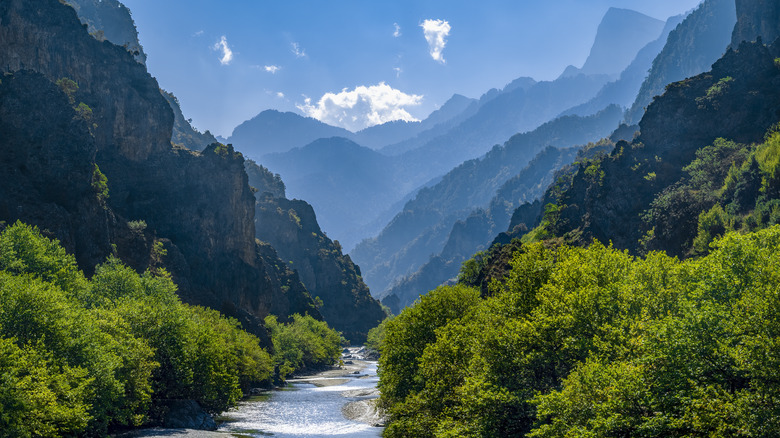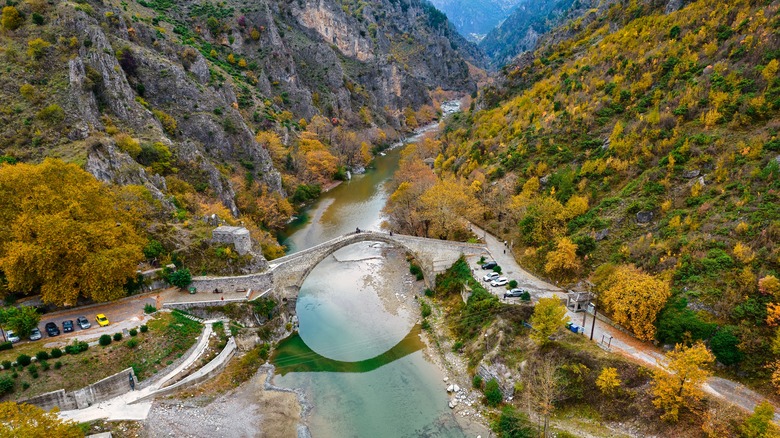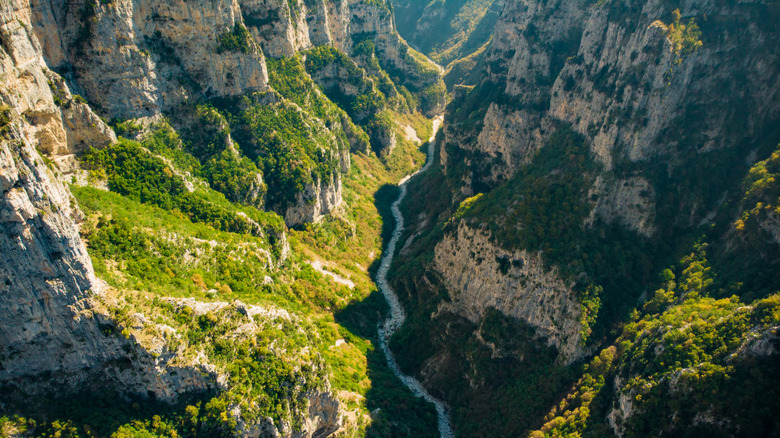This Underrated Region In Greece You've Probably Never Even Heard Of Is A Hiker's Paradise
If you love hiking, you probably know about the areas of the world that are famous for their trails. New Zealand has a hike to Mount Doom from The Lord of the Rings. Hawai'i has tropical trails with waterfalls and lush rainforests. You can hike in the Andes mountains in South America or along the Palisades in New Jersey. There are too many famous places to name. That said, with all the areas of the globe known for hiking, Greece isn't a country that comes to mind right away. However, there is a region of that beautiful country that is perfect for a summer hike. One place there is often referred to as the Grand Canyon of Greece.
This place is the region of Epirus, in northwest Greece, near western Macedonia and Thessaly. The main town is Ioánnina, which is about six hours from Athens. People have been here since the Paleolithic era, and you can find ruins from the Mycenaean era. It was even written about by Pausanias, who wrote one of the first travel guides between 143 and 176 C.E. It's been governed by Rome, Byzantium, Türkiye, the Venetians, the Ottomans, and Greece. There are forests, mountains, and more rainfall here than in many other parts of the country. Though this is a big region, we'll inform you of some of the best hiking routes and the 18th and 19th-century stone arches you can visit. We'll tell you everything you need to know before you go.
Arches and hikes in Epirus
This is a large region, so we'll give you a couple of hikes to start with — or tours even. One area that is great for a hike is Zagori in Epirus' Pindus mountains. This place has hikes on the easier side. You can do one that starts in Kipi village and is a 5-mile roundtrip. You'll pass through Koukouli village and see four of the stone arches we mentioned on the way back. There are over 160 of them in Epirus. They aren't exactly ancient, but they're beautiful and worth your time. The arches are called kamares, and you'll find them in varied forms: single, double, and even triple ones. For the latter, you can check out the Kalogeriko Bridge, built in 1814, near the villages of Kipi and Koukouli.
A hike that you absolutely cannot miss is Vikos Gorge. This "Grand Canyon of Greece" is nearly 3,300 feet deep. It's not overly well-known to tourists, so you probably won't be dealing with crowds. That said, it's not a secret, and it's well-marked. It's also 8 miles long, point to point. You can hike in both directions or take a taxi back. Later in the hike, the trail splits to the left and right. On the left is Vikos village, where you can get some great food and a taxi if you're not staying there. On the right is a trail to Viodomatis Springs, where you can swim in the cool, clear water.
What to know before you go to Epirus for a hike
The best time of year to visit depends on your heat tolerance. In degrees Fahrenheit, the average high in April and May sits in the 60s, with June in the mid-70s, July and August in the mid-80s, and September in the mid-70s again. It can drop quite a bit at night. It rains more in the winter than in spring, summer, or fall. There are plenty of places to stay in the area, and you'll probably want to rent a car. Taxis can get pricey, and there is much to see in the region, especially if driving to and from Athens.
It's recommended that you wear hiking shoes. You can do hikes in sneakers, but this is rocky terrain. Hiking shoes or boots will give you more stability. As we said, it can rain here, making the rocks slippery. Another thing to be aware of is that bears are in the area. Keep any hiking snacks contained and closed up. If you see one, stay calm, speak softly so the bear knows you're not an animal, and wave your arms. Move slowly sideways so it doesn't think you're running at it or away, like prey. Finally, it's a good idea to keep some cash on you for taxis back to your hotel or residence. That way, you don't have to worry if you get tired partway through a hike or want to spend more time with this beautiful scenery.


